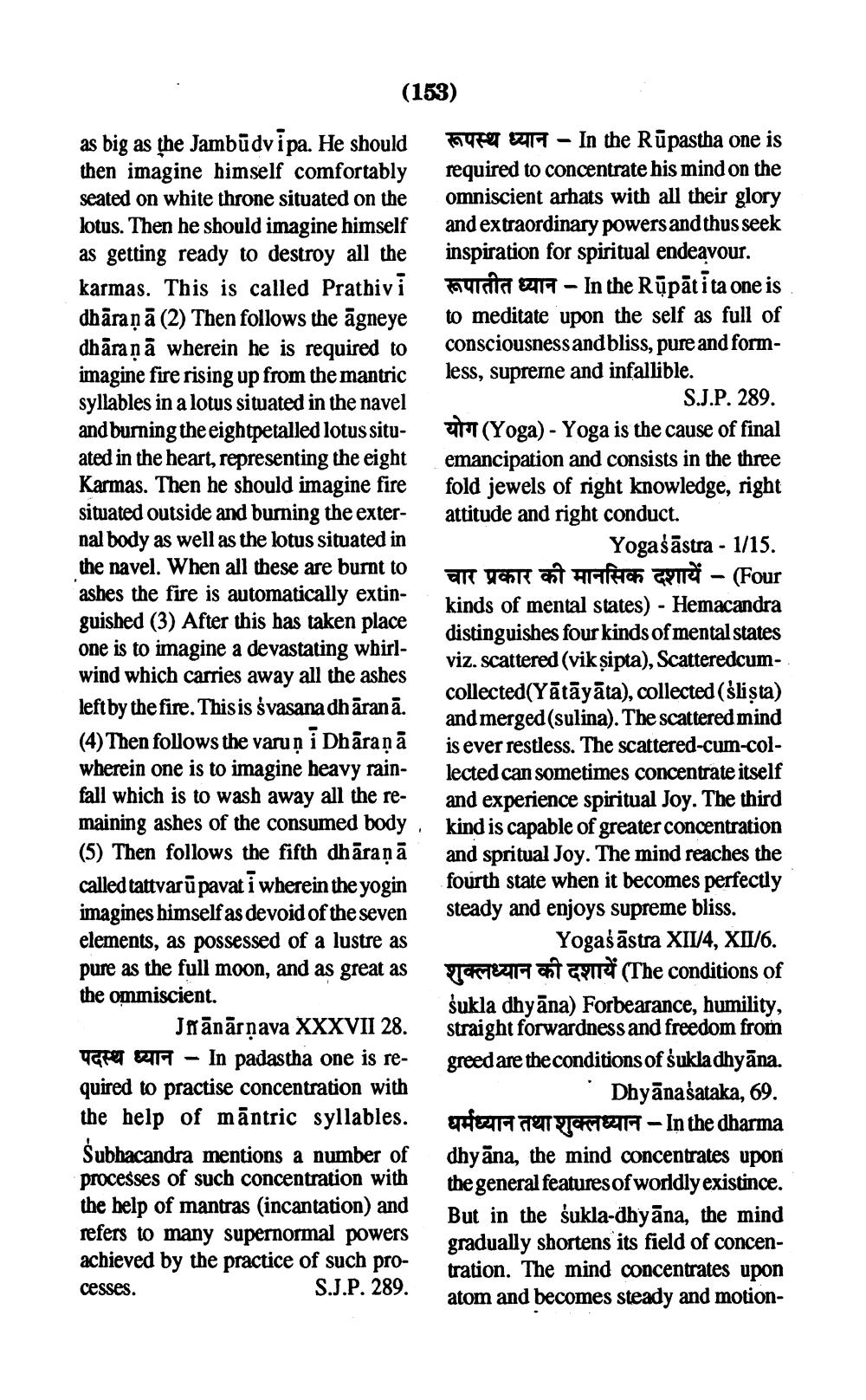________________
(153)
as big as the Jambudvipa. He should then imagine himself comfortably seated on white throne situated on the lotus. Then he should imagine himself as getting ready to destroy all the karmas. This is called Prathivi dhāraṇā (2) Then follows the agneye dhāraṇā wherein he is required to imagine fire rising up from the mantric syllables in a lotus situated in the navel and burning the eightpetalled lotus situated in the heart, representing the eight Karmas. Then he should imagine fire situated outside and burning the external body as well as the lotus situated in the navel. When all these are burnt to ashes the fire is automatically extinguished (3) After this has taken place one is to imagine a devastating whirlwind which carries away all the ashes left by the fire. This is svasana dhāran ā. (4) Then follows the varun iDharaṇā wherein one is to imagine heavy rainfall which is to wash away all the remaining ashes of the consumed body (5) Then follows the fifth dhāraṇā called tattvaru pavat i wherein the yogin imagines himself as devoid of the seven elements, as possessed of a lustre as pure as the full moon, and as great as the ommiscient.
Jānārṇava XXXVII 28.
पदस्थ ध्यान In padastha one is required to practise concentration with the help of mantric syllables. Subhacandra mentions a number of processes of such concentration with the help of mantras (incantation) and refers to many supernormal powers achieved by the practice of such proS.J.P. 289.
cesses.
-
1
-
रूपस्थ ध्यान In the Rupastha one is required to concentrate his mind on the omniscient arhats with all their glory and extraordinary powers and thus seek inspiration for spiritual endeavour. रूपातीत ध्यान In the Rupatita one is
to meditate upon the self as full of consciousness and bliss, pure and formless, supreme and infallible.
S.J.P. 289. (Yoga) - Yoga is the cause of final emancipation and consists in the three fold jewels of right knowledge, right attitude and right conduct. Yogasāstra 1/15. चार प्रकार की मानसिक दशायें - (Four kinds of mental states) - Hemacandra distinguishes four kinds of mental states viz. scattered (vik şipta), Scatteredcumcollected(Yātāyāta), collected (slista) and merged (sulina). The scattered mind is ever restless. The scattered-cum-collected can sometimes concentrate itself and experience spiritual Joy. The third kind is capable of greater concentration and spritual Joy. The mind reaches the fourth state when it becomes perfectly steady and enjoys supreme bliss.
Yogas astra XII/4, XII/6. शुक्लध्यान की दशायें (The conditions of sukla dhyana) Forbearance, humility, straight forwardness and freedom from greed are the conditions of sukladhyāna. Dhyanasataka, 69. धर्मध्यान तथा शुक्लध्यान - In the dharma dhyana, the mind concentrates upon the general features of worldly existince. But in the sukla-dhyāna, the mind gradually shortens its field of concentration. The mind concentrates upon atom and becomes steady and motion




